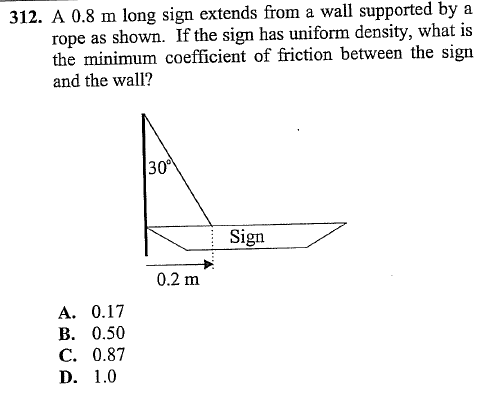- Joined
- Jun 5, 2013
- Messages
- 1,096
- Reaction score
- 727
Hi, I had some trouble with this problem initially, and after looking over the answer I'm even more confused. The answer mentions that upwards forces must equal downward, thus Tcos30= mg + f, however from my understanding, since the sign would be moving downwards, wouldn't f (frictional force) be upwards?
The entire answer seems convoluted, I was hoping for a simpler explanation.
Thanks very much!


The entire answer seems convoluted, I was hoping for a simpler explanation.
Thanks very much!



 )
)